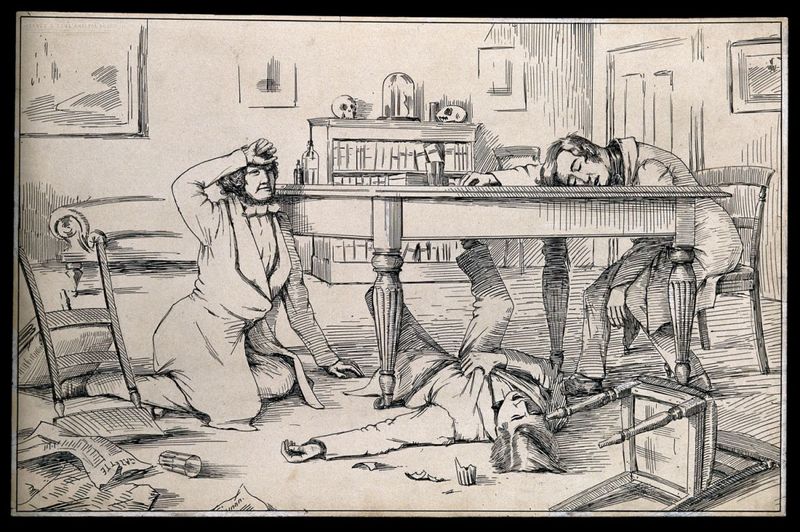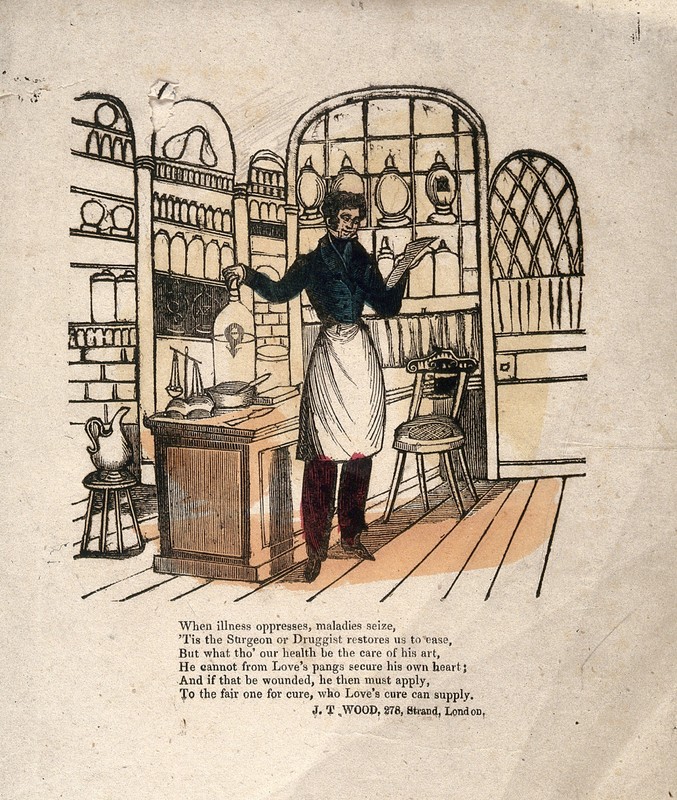Drugs and their Manufacture in the Nineteenth Century
Herbal remedies have been in use in Europe since medieval times. From the 1500s, municipal authorities began compiling pharmacopoeias which approached medicine more scientifically. These described what drugs were in common use, how they should be prepared, and what materials were acceptable for medicinal purposes. Pharmacopoeias remained important reference tools for pharmacists for many centuries, alongside materia medica, which outlined how drugs should be used in treatment. It wasn’t until the Enlightenment and the birth of chemistry, however, that drugs and how they worked began to be properly understood. In the first half of the nineteenth century, physiologists, pharmacists and chemists across Europe and the US used chemical methods to identify and purify the drugs in various substances, isolating the active ingredients and identifying their effects in the body.
Chemistry and pharmacy grew into disciplines founded on the results of animal experiments and systematic observation. Throughout the nineteenth century more and more drugs were discovered and the production of medicines moved from the druggist’s shop to industrial pharmacies, where further scientific innovation could be undertaken with better machinery and a larger budget. Drugs that were isolated (or “discovered”) during the first half of the century included alkaloids such as strychnine, emetine, morphine, quinine, and caffeine. Salicylic acid, and later, salicin, was also isolated from willow bark.
Despite this, at mid-century the production of drugs was still primarily through the use of natural products, and synthetic chemicals were uncommon until the 1880s, one notable exception being the discovery of ether and chloroform as anaesthetics. Many chemists and pharmacists still compounded their own medicines from a botanical or mineral base. They made these medicines in a variety of dosage forms, depending on the active ingredient, the purpose of the medication, and how the patient would take it. They had many different tools in their shops with which to do this, including items such as a mortar and pestle or pill cutter, to more complex types of machinery which would cut, heat, or press ingredients into different forms. Common dosage forms throughout the 1800s included powders (alongside wafers and cachets, to make them more palatable), pills, tablets, gelatin capsules, pastilles, lozenges, mixtures, tinctures, and emulsions. These were all imbibed. Ointments, lotions and plasters were applied externally, whilst enemas, suppositories, pessaries and inhalations were all intended to be taken via bodily orifice.
The various ingredients to make these medicines were the drugs kept by the pharmacist or chemist-druggist in the apothecary jars in their shop, close at hand so they could prepare mixtures on demand. If we take a closer look at these jars, we can find out more about the kinds of medication a mid-nineteenth-century pharmacist would have been making and selling. Click to the next page to peruse the shelves of a pharmacy of the 1860s.


